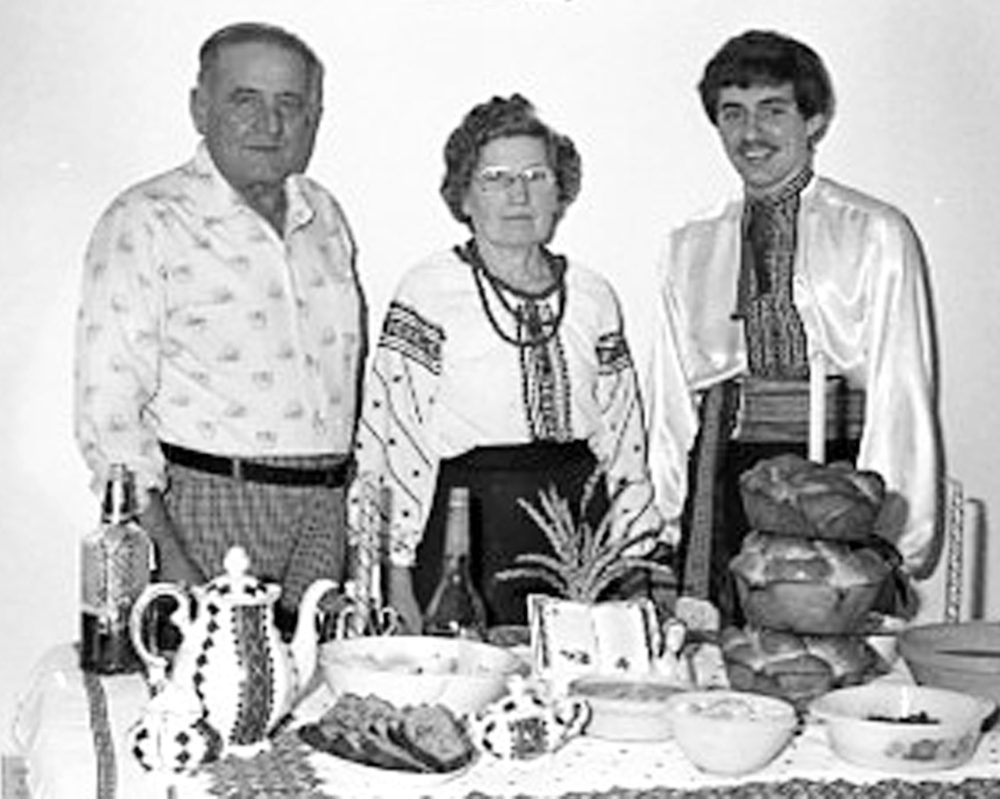COLUMN: Carillon Flashback January 5, 1983 – Ukrainian families celebrate Christmas in traditional way
Advertisement
Hey there, time traveller!
This article was published 08/01/2023 (904 days ago), so information in it may no longer be current.
For the majority of Manitobans, Christmas and New Year with all the magic and anticipation are past. However, if you are a traditional Ukrainian, the magic and ceremony of the holy season is yet to come.
According to the Ukrainian Cultural Center in Winnipeg, the majority of Ukrainians living in Manitoba still celebrate Christmas and the New Year by the Julian calendar, which designates Christmas as Jan. 7.
In the lives of the Ukrainian people, the whole year is one great cycle of holidays and feast days, rich with customs, symbolism and ceremony.

The most beloved and anticipated of all holidays is Christmas or Rizdvo. For Ukrainians observing the traditional holiday, Christmas doesn’t end after one day. This season stretches out for nearly three weeks.
Christmas Eve, Jan. 6, is the most important of all feast days. The main feature of is the “Holy Supper”, which is eaten after a day of fasting. The day-long fast is in remembrance of the Virgin Mary’s trials and tribulations on the long road to Bethlehem.
The Christmas Eve meal is served to the family when the first evening star appears.
Margaret Gresiuk of Pansy, who makes the 12 traditional Lenten dishes which are symbolic of the 12 apostles of Jesus, says each dish has a special meaning.
The meal begins with kutia after the family joins together to pray the Lord’s Prayer. Kutia is a dish of cooked wheat sweetened with honey and poppy seeds, symbolic of Christ, the Son of God, Who made the earth and the harvest.
Ukrainian borscht, made with beets and served without cream, is the next dish to be passed. A jellied fish or maybe pickled herring is next. Ukrainian pyrohy, also known as perogies or vereniki, are made with different fillings, Mrs. Gresiuk explains.
“For this Christmas I made prune-filled, sauerkraut-filled, and the potato-and-cheese pyrohy.”
Holubtsi or cabbage rolls are served on Christmas Eve with a buckwheat filling. A stew of dried beans is made with garlic, onions, salt and pepper. Wild mushrooms, in a special sauce is another vegetable. A dried fruit stew is also served and is often made with dried apples, prunes or plums.
Kolach, is a special rounded, braided loaf made from a rich yeast dough. The kolach is stacked in three tiers to represent three kings who visited the Christ Child. A candle is inserted in the middle of the kolach and symbolizes coming prosperity. The kolach is never cut on Christmas Eve, but is served Christmas Day.
For the last main course, Mrs Gresiuk made a special Ukrainian honey cake this year. Other Ukrainian cooks sometimes prepare this cake, or they make pampushka, a filled dough that is deep-fried and dusted with icing sugar. At the very end of the meal, one apple is sliced to be divided among the family members.
The apple is a reminder that we are with sin and need to strive for holiness. A special toast of wine or vodka is made at the end of the meal followed by carol singing.
The oldest and favorite Christmas carol is Boh Predvichney (Eternal God is Born). Soon after midnight, or early the next morning, the family attends Christmas services at the local parish church.
On Christmas Day, Jan. 7, everyone gathers around the yalynka or Christmas tree and the youngest child usually distributes the gifts that St Nicholas has brought. Christmas Day is spent with family and friends.
The New Year is celebrated Jan. 14. On this and other feast days during the season, most Ukrainian families gather around tables that never seem to empty. During this time, meat dishes are allowed and Ukrainian mothers like Mrs Gresiuk cheerfully prepare roast turkey, goose, holubtsi (with meat), sausage and all the trimmings.
The feast of St Jordan is on Jan. 19 and brings the Christmas cycle to a close. The main feature of St Jordan Day is an impressive church service with the blessing of water, commemorating the baptism of Christ in the Jordan River.
– with files from Sue Barkman
